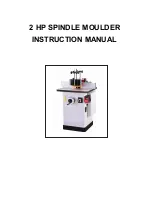
14
LIMBING AND PRUNING
WARNING: Be alert for and guard
against kickback. Do not allow the
moving chain to contact any other
branches or objects at the nose of the
guide bar when limbing or pruning.
Allowing such contact can result in
serious injury.
WARNING: Never climb into a tree to
limb or prune. Do not stand on ladders,
platforms, a log, or in any position
which can cause you to lose your
balance or control of the saw.
Important Points
Work slowly, keeping both hands firmly
gripped on the saw. Maintain secure footing
and balance.
Watch out for springpoles. Springpoles are
small size limbs which can catch the saw
chain and whip toward you or pull you off
balance. Use extreme caution when cutting
small size limbs or slender material.
Be alert for springback. Watch out for
branches that are bent or under pressure.
Avoid being struck by the branch or the saw
when the tension in the wood fibers is
released.
Keep a clear work area. Frequently clear
branches out of the way to avoid tripping over
them.
Limbing
Always limb a tree after it is cut down. Only
then can limbing be done safely and properly.
Leave the larger limbs underneath the felled
tree to support the tree as you work.
Start at the base of the felled tree and work
toward the top, cutting branches and limbs.
Remove small limbs with one cut.
Keep the tree between you and the chain. Cut
from the side of the tree opposite the branch
you are cutting.
Remove larger, supporting branches with the
cutting techniques described in BUCKING
WITHOUT A SUPPORT.
Always use an overcut to cut small and freely
hanging limbs. Undercutting could cause limbs
to fall and pinch the saw.
Pruning
WARNING: Limit pruning to limbs
shoulder height or below. Do not cut if
branches are higher than your shoulder.
Get a professional to do the job.
1. Make the first cut one-third of the way
through the bottom of the limb.
2. Make the second cut
all the way through
the limb.
3. Make the third overcut leaving a 1 to 2 inch
(2.5 to 5 cm) collar from the trunk of the tree.
1
2
1
2
1
2
1
2















































